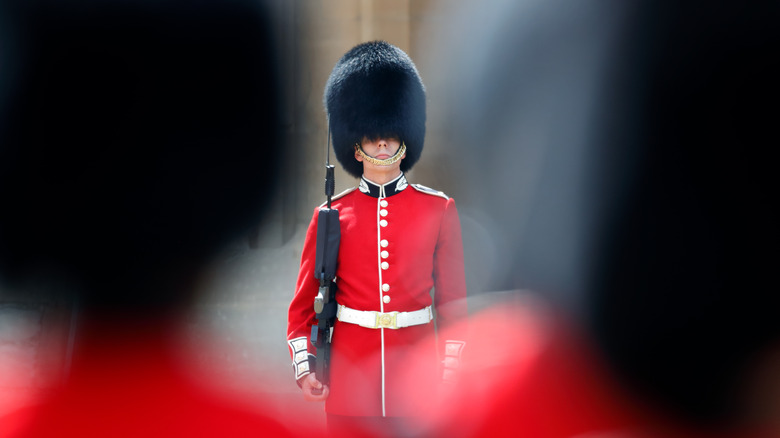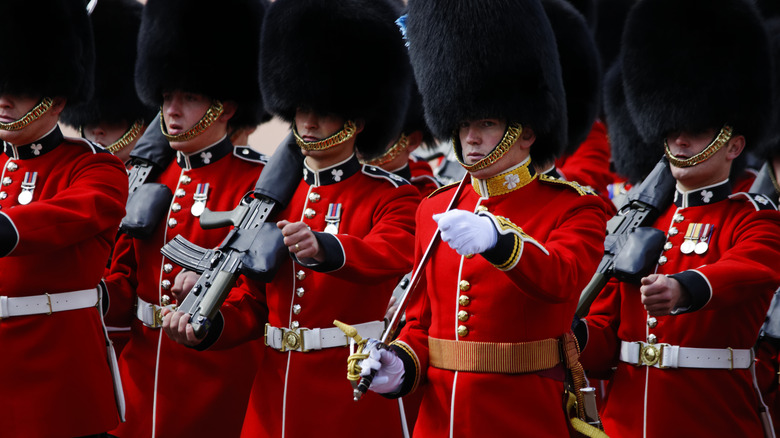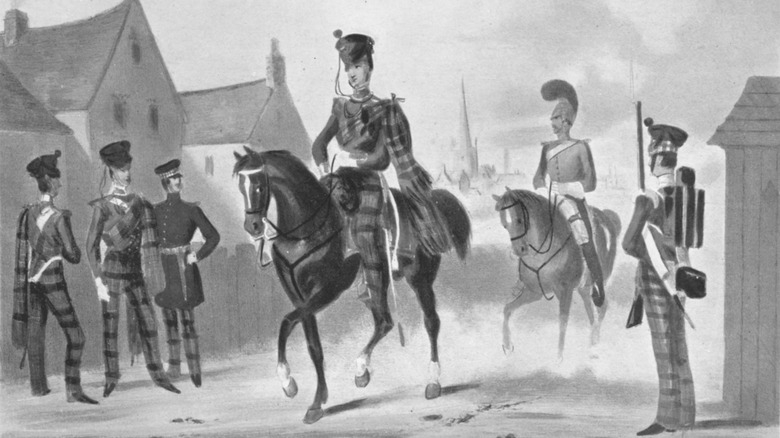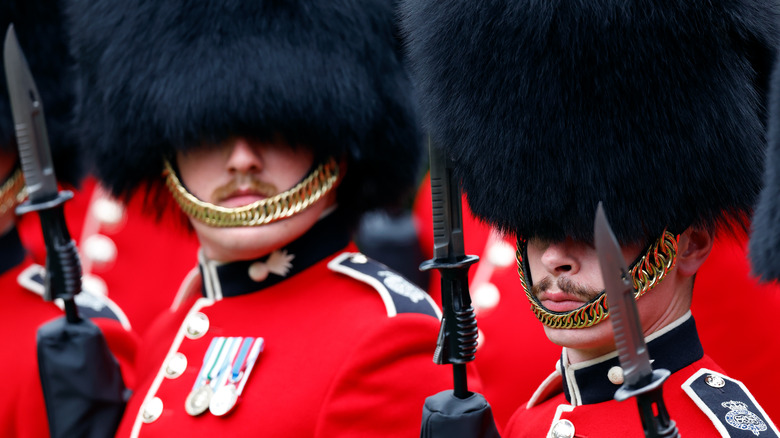The Real Reason The Scots Guard Were Once Called 'The Kiddies'
Although military operations are, by necessity, serious matters (they are literally matters of life and death), that doesn't mean that the men and women who work in various units haven't applied nicknames to them over the centuries. For example, as Military reports, the 28th Infantry Division picked up the nickname "Bloody Bucket" during World War II, while the Navy's Strike Fighter Squadron 102 (VFA-102) are known as the "Diamondbacks" (and no, that's not a reference to the Phoenix baseball team).
Over in Old Blighty, various British military units have also picked up nicknames over the centuries. For example, according to the book, "Regimental Nicknames and Traditions of the British Army," via Project Gutenberg, the Buffs and the Hussars, among others.
One of the more cutesy, for lack of a better choice of words, nicknames for a British military unit applies to the Scots Guards who, for reasons that will soon be made clear, have at times been known as the Kiddies.
What even is the Scots Guard?
The Scots Guard is, according to The National, one of five British Army units tasked with guarding the monarch and their properties (collectively called Foot Guards; the other four are the Grenadier Guards, Coldstream Guards, Welsh Guards, and Irish Guards, per Changing-Guard). Though these men (and the occasional woman) are largely associated with their finery and with the traditional, ceremonial role assigned to them, make no mistake: They are trained infantrymen, and some of them have likely seen combat. And should the need arise, any of them could be sent to some far-off locale to engage in combat against an enemy.
In case you were wondering, you can tell which division a royal guard belongs to based on certain properties of their uniforms. The Scots Guard, for example, don't have a plume on their bearskin hats, whereas the Grenadiers wear a white one on the soldier's left, the Coldstreams a red one on their right, the Irish a blue one on their right, the Welsh a green and white one on their left.
'The Kiddies'
Though they're sometimes colloquially referred to as "The Kiddies," the Scots Guard are not children, owing to the fact that Western nations generally take a dim view of children being impressed into war. Instead, according to The National, the name dates back to its 17-century origin and its historical place among other royal guardsmen.
The unit that would come to be known as the Scots Guards was formed in 1642, according to the regiment's website, when King Charles I called upon 1,500 men to help him put down a rebellion. We'll spare you some complicated and nuanced history that took place over the next couple of decades, but by 1686 they had become a part of the established army. They were, however, the third group of royal guards to be established, after the Coldstream Guards and Grenadier Guards, and because of that, their peers took to calling them "The Kiddies."
Despite the diminutive nickname, the regiment has fought honorably over the centuries, even having played a small role in the American Revolution (which Britain lost, but that's a topic for another article). As recently as 1973, they were even protecting the Bank of England.
Becoming a Scots Guardsman or woman
Becoming a Scots Guardsman is remarkably straightforward: Simply join the British Army (they have a website explaining various career options), sign up for the infantry (all royal guards are infantry units), and then, as your career progresses, angle for a job as a royal guard. If you meet the physical requirements and your superiors consider you a good fit (and if there are openings), you're in. You don't have to be Scottish, and indeed, you don't even have to be British; recently a Canadian soldier was appointed to the ranks of the royal guard, according to CBC News, owing to a reciprocal relationship between the British Army and those of other Commonwealth armies.
Of course, you won't be paid much, according to Indeed UK (even officers make less on average than regular Britons), you'll have to stand perfectly still for two or more hours at a time, you'll have to deal with tourists trying to get you to break character (so to speak). And if you do break character, your pay will be docked. Further still, you'll be expected to wear your finery, up to and including the bearskin hat, regardless of how hot it is. On the other hand, you'll occupy a publicly facing role cemented by centuries of tradition, and you'll be the literal face of the British military.



